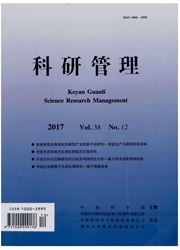

 中文摘要:
中文摘要:
构建了两个竞争生产商、两个零售商与最终顾客组成的三级供应链Stackelberg博弈模型,研究了两个竞争生产商分销渠道设计中如何制定产品质量决策的问题。建立了生产商分销渠道三种策略模型(直接渠道策略、间接渠道策略、混合渠道策略),并且分析了三种渠道策略对生产商产品质量决策、零售商产品采购决策、期望收益函数以及最终顾客消费者剩余的影响。与直接渠道相比,当生产商选择间接渠道策略时,产品质量水平和销售价格均将下降,最终顾客的消费者剩余也会降低,但当低质量生产商选择间接渠道策略时,消费者剩余将会增加,此结论也是对本领域研究的有力补充。最后,进行了算例分析,数值计算结果验证了所建模型的有效性和结论的正确性,为该模型在实践中的具体应用指明了方向。
 英文摘要:
英文摘要:
This paper constructs the three - echelon stackelberg game model which consists of two competitive producers, two re- tailers and the end customers, and studies how to make quality strategies in designing the distribution channels of the two compet- itive producers. It also develops three types of strategy models of the producer distribution channel (the direct channel strategy, indirect channel strategy and mixed channel strategy), and analyzes impact of the distribution channel strategy on the producer' s product quality decision, the retailer's product purchase decision, the expected profits function and the customer's consumer surplus. Compared with the direct channel strategy, when the producer chooses the indirect channel strategy, the product quality level and the retailing price will both be reduced and the consumer surplus will also be decreased finally. However, when the low quality producer chooses the indirect channel strategy, the consumer surplus will be increased. These conclusions will be a strong complement in the research field of distribution channel quality strategy. Finally, an example analysis is conducted and the nu- merical computing results prove the model' s effectiveness and the conclusion' s correctness, both of which will indicate the fur- ther specific application direction in practice.
 同期刊论文项目
同期刊论文项目
 同项目期刊论文
同项目期刊论文
 期刊信息
期刊信息
